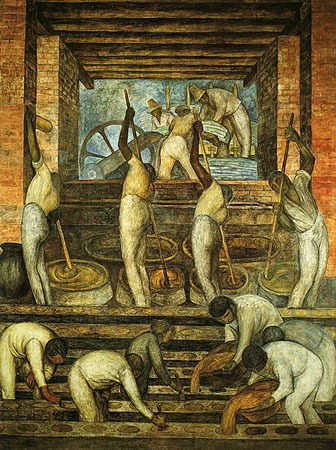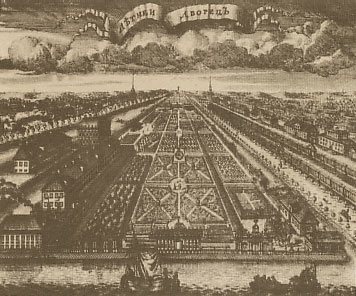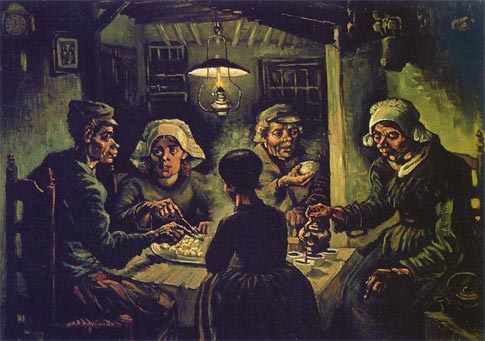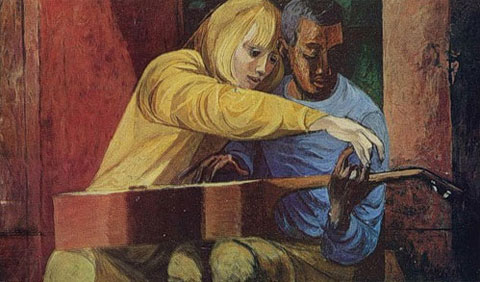Anton Refrigier – born in Moscow
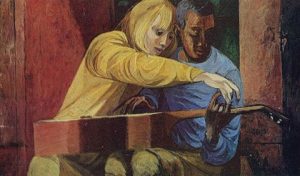 Refrege was born in Moscow in the year of the first Russian revolution. This fact would seem irrelevant to the biography of an American artist: after all, his father took him to his homeland, to France, when he was still a teenager. In Paris, the boy’s artistic inclinations, inherited from his Russian ancestors, appeared: his maternal grandfather was a famous violinist, his grandmother was a ballerina of the Mariinsky Theater, and Anton himself became interested in the sculptor’s craft. But in Paris, the Refrigier family did not linger long: another move followed, this time across the ocean, to the United States, where a few years later Anton graduated from art school. The young artist loved America, he felt that he was a full-fledged citizen, he wanted to capture her history, nature, people.
Refrege was born in Moscow in the year of the first Russian revolution. This fact would seem irrelevant to the biography of an American artist: after all, his father took him to his homeland, to France, when he was still a teenager. In Paris, the boy’s artistic inclinations, inherited from his Russian ancestors, appeared: his maternal grandfather was a famous violinist, his grandmother was a ballerina of the Mariinsky Theater, and Anton himself became interested in the sculptor’s craft. But in Paris, the Refrigier family did not linger long: another move followed, this time across the ocean, to the United States, where a few years later Anton graduated from art school. The young artist loved America, he felt that he was a full-fledged citizen, he wanted to capture her history, nature, people.
“There can be no progress without struggle” – with these words F. Douglas, an outstanding fighter for the liberation of blacks, the artist addressed the viewer in one of his monumental works – a mosaic adorning the building of the Martin Luther King Center in New York. Here the idea that passes through all the works of the American master is clearly expressed that a happy, fair future will not come by itself, it is necessary to fight for it a lot and hard. This difficult but noble struggle was devoted to the life and work of Anton Refrege.
The independent work of the artist began with the design and decoration of interiors. But he was not satisfied with the career of a decorator decorating the life of the rich: he wanted to work for the masses, giving the main strength to the design of public buildings, drawings for progressive newspapers and magazines, and special posters. Soon Refrege found like-minded people in the New York John Reed Club, named after the author of the book Ten Days That Shook the World. The club was organized by representatives of the progressive intelligentsia, who sought to create a new, revolutionary art. The young artist supported their initiative – the opening of an art school at the club, taught it for free, painted political cartoons for trade union and communist publications. He illustrated the pamphlet revealing the truth about Tom Muni, a trade union leader arrested on a false murder charge.
The decade that followed the economic crisis of 1929-1931 was sometimes called the “red decade” in the United States. The workers of America, defending their rights, have achieved many transformations that affected all spheres of life, including art. To help American artists and to give their activities a broad public sound, F. Roosevelt’s government began to implement a colossal program of monumental art development. A whole army of painters received at their disposal the walls of public buildings – schools, libraries, universities, communal centers, hospitals, post offices.
The dream of Refrigier came true – to create not for rich collectors, not for museum collections, but for the people. Explaining his passion for monumental art, the artist said: “I had to perform different works. I painted posters, illustrated books, designed theater productions. But the main thing that interested me was monumental works. Why? Yes, because their social sound is very large. To get acquainted with easel painting, you must go to the museum, specifically adjust yourself to the appropriate way. Monumental works are always with a person. For me, this is an opportunity to communicate with a person, the possibility of deep self-expression and influence on people’s feelings. That’s my whole life. ”
Monumental art requires special qualities from a painter. Refrain was endowed with them in full. The muralist’s brush is visible in his easel paintings, for example, in the painting Summer, which was written simultaneously with the first wall paintings. Its composition is built on two triangles: one is the gable of the house, the second is the outlines of the sitting girl’s figure, clear, lapidary, unshakable. Forms seem carved out of stone, involuntarily I recall the beginning of the artist’s creative path – the occupation of sculpture. It is not difficult to imagine how this picture, with its verified, almost architectural construction, generalized manner of writing, energetic cut-off modeling, would look like a fresco.
In the early 1940s, winning the National Competition, Refrigier received an order for 29 wall panels for the Rincón Hill Hill Post Office building in San Francisco. This huge cycle of murals, which the artist rightly considered his most outstanding achievement, depicts the turbulent history of San Francisco, starting from the time of the patriarchal life of the Indians and ending with the events of the First World War. Here in front of the viewers are immigrants going to the West. They found a tent near the road of the same settlers killed by Indians. Sternly and sorrowfully looking at the lifeless bodies of a man with a gun, and his comrades go on – nothing can stop them.
